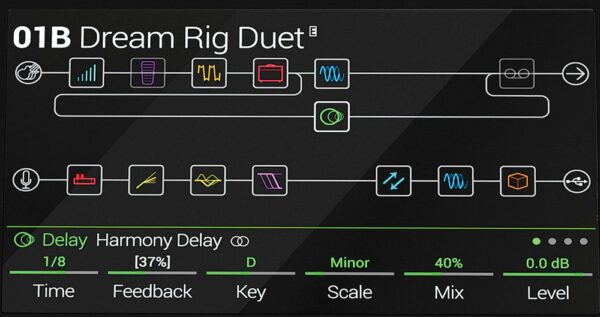By: Chris Maute
Bassists – you’re doing distortion wrong
Bass guitar is the most important instrument ever created to perform the most important function in music. Why do bassists disempower themselves with a bottom-cutting distortion used in series? Why do they avoid getting better bass tone?
That is, why haven’t we learned the lesson taught by Billy Sheehan and so many audio engineers for the past 50 years to achieve better bass tone?
What lesson? First, split your bass signal with a crossover (~150-300 Hz), then treat the upper frequencies (> 150 – 300 Hz) with distortion, overdrive, compression, etc. while treating the lower frequencies (< 150 – 300 Hz) with a clean compression and slight gain/overdrive. Finally, reintroduce the clean-treated lower frequencies back into the dirty-treated higher frequencies to taste.
Voila! You now have a funk-nasty saturated tone that maintains the meaty justice of your most important role as bassist.
Why stop there? Distortion isn’t the only thing that sounds good when you use a crossover to split a bass signal. Clean effects like modulations (chorus, vibrato, flangers, etc.) and delays glisten and shimmer when applied to a frequency range above ~200 Hz. With a solid, compressed, and consistent low end as a foundation you have more liberties applying effects.
But, why stop there? For those tone-astronauts who are asking themselves, “Couldn’t I also treat the low end with some stank?”, the answer is a resounding, “Yes!” The envelope filter is a perfect example. With the Low Pass (LP) setting of an envelope filter applied to the low frequency split, you can set the sensitivity just below threshold resulting in a ‘burble’ on the low end that doesn’t pierce the envelope while your note definition is maintained on the clean high frequency split.
And, yes. You can apply another envelope filter to the high frequency split using a Band Pass (BP) setting set with a sensitivity that makes it dance just above the threshold for a ‘burble on steroids’ sound effect.
I think you get the picture and I haven’t even gotten into combining distortion with envelope filters with delays and choruses with pineapple on pizza. Let’s just say the sky’s the limit.
Better Bass Tone at Tone Tailors
You may have noticed that this could potentially double the number of pedals! If you are a pedalboard guy Tone Tailors has a variety of Darkglass overdrive pedals (which I recommend) available as well other brands. There is also a world of specialty effects available on the wall-of-pedals at Tone Tailors.
Another way to handle this is to use a multi-effects unit that allows you to control signal path. For this purpose, I suggest the Line 6 Helix family of products, also available through Tone Tailors. Ok, I admit I was playing a bit of ‘hide the ball’ by starting the blog with distortion and ending it with ‘the power of crossover’ as applied to effects for bass, the most important instrument performing the most important function ever. But I feel justified in my cause and have much more to say about ‘better bass tone.’
Join me for future blogs. See how bad it ain’t.

